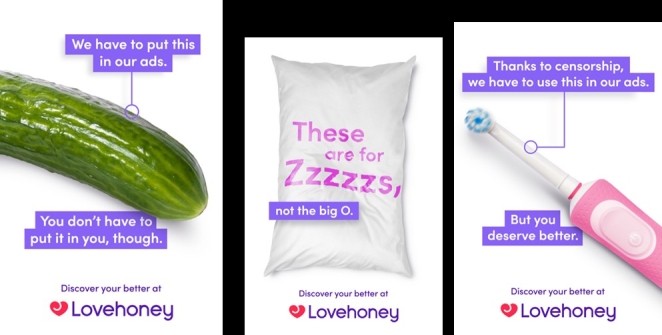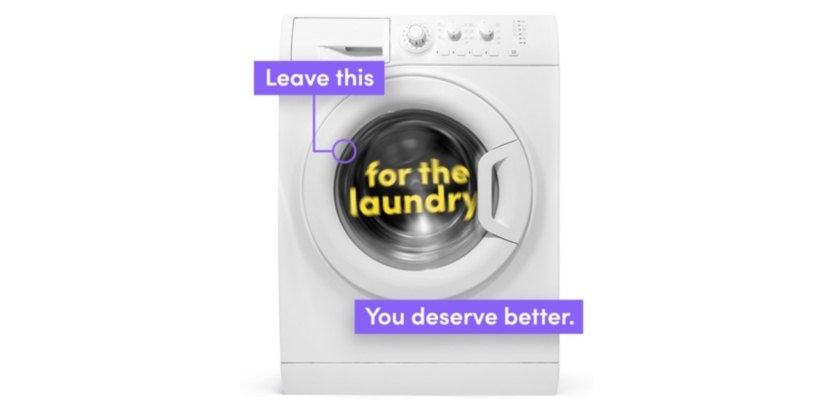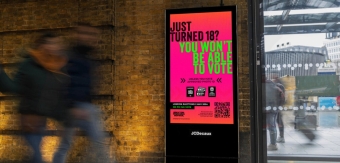Lovehoney, the UK’s “leading destination for sexual happiness,” recently unveiled its latest out-of-home campaign, 'Not a Sex Toy', spotlighting the everyday household objects that people in the UK turn to for sexual pleasure. Featuring items such as toothbrushes, pillows, and cucumbers - with tongue-in-cheek copy telling the public ‘You deserve better’ - the brand takes on strict advertising restrictions, whilst raising awareness of an important topic: the potential risks of stigmatising sexual pleasure.
The campaign comes a year after Lovehoney received a complaint from the ASA concerning a billboard featuring a Ball Gag, which was erected in response to Prince Harry’s memoir ‘Spare’, to remind everyone that sometimes ‘Silence Is Golden’. Given these restrictions, the sexual wellness brand is this time using household objects as the focus of its campaign, humorously circumventing restrictions by using the most popular sex toy substitutes.
Recent research reveals that two in five (41%) people in the UK are turning to everyday household objects to get themselves off. Items that they use include pillows (14%), hairbrushes (9%), mobile phones (8%), socks (8%), and finally pop culture favourite - the electric toothbrush (7%).
Lovehoney partnered with brand value agency Boldspace, which was responsible for the creative direction and strategy. To find out more about Lovehoney’s latest campaign, we spoke to Lou Kelly, Head of Consumer at Boldspace.
What was the brief?
Lovehoney is always looking for ways to break down the taboo surrounding sex and sexual wellness. While there was no official brief for this campaign, we wanted to take on the restrictions that prevent people from talking about sex. In the UK, there are strict advertising rules which not only prevent brands like Lovehoney from featuring their products but stigmatise topics like sexual health.
How did the initial pitch/brainstorming phase go?
The idea came to us when we were thinking about the impact of advertising restrictions when it comes to sex and sex toys. It led us to think about what we have to do when we work with brands like Lovehoney, which can’t feature their products in advertising – get creative!
We then considered the impact more specifically on sex. What happens when sex toys are stigmatised, and people can’t see them in advertising? They get creative too!

This led us to explore all the things that people use in place of sex toys. We commissioned research that uncovered that people are using all sorts of items in their place – from pillows and cucumbers, to washing machines and socks.
As soon as we got to this point, we knew we needed to create an OOH campaign that featured the nation’s favourite sex toy replacements – allowing us to challenge advertising restrictions head on, while starting an important conversation on sexual health.
The brainstorming process was like putting together a puzzle—finding creative loopholes and figuring out how to make a statement while staying within the boundaries.
What was the process behind ideating the concept?
Once we had landed on the idea, we started to think about how we could bring it to life in a way that eluded to the true topic – sex and sexual health – in a way that could effectively side step advertising guidelines.
We took the top sex toy replacements from our research and crafted clever copy to accompany each of them, telling people ‘you deserve better’. From telling people to leave the washing machine for the laundry, to pillows being for Zzzzs and not the big O.
In featuring the everyday household objects in the ads, we effectively created a series of ‘unbannable ads’, which we popped up in several locations across the country.
What was the production process like?
Once the creative for the campaign was finalised, we worked closely with Lovehoney and its in-house team to bring the design to life.
What was the biggest challenge during production? How did you overcome it?
One of the biggest challenges was ensuring the campaign stayed provocative without crossing any boundaries.

It was important to land the right tone – we wanted the copy to be thought provoking, but remain playful and fun, with simple, eye-catching visuals.
We went through several rounds to refine the creative to ensure that it hit the right note, with lots of testing and input from the wider team.
What is one funny or notable thing that happened during production?
There was lots of discussion around the items that came out top in the research, with a few of them raising eyebrows within the team (with the washing machine causing particular confusion).
One of the standout office conversations during the campaign development was around whether a hairbrush would be used handle end or bristle end!
What’s the main message of this project and why does it matter?
The key message is that it’s so important to break the taboo around sexual pleasure and sexual health.
In this case, preventing people from seeing and learning about sexual wellness through advertising may be driving people turning to potentially dangerous alternatives.

Using humour and creativity, we sought to spark a conversation and raise awareness about the importance of sexual wellness.
How long did it take from inception to delivery?
The campaign took about four weeks to get off the ground after we had the green light.
What do you hope it achieves for the brand?
We hope this campaign helps Lovehoney continue to push boundaries, challenge taboos, and advocate for sexual wellness.
Credit list for the work?
Creative Direction: Boldspace
Copywriting: Lovehoney and Boldspace
Design: Lovehoney and Boldspace
Client: Lovehoney




